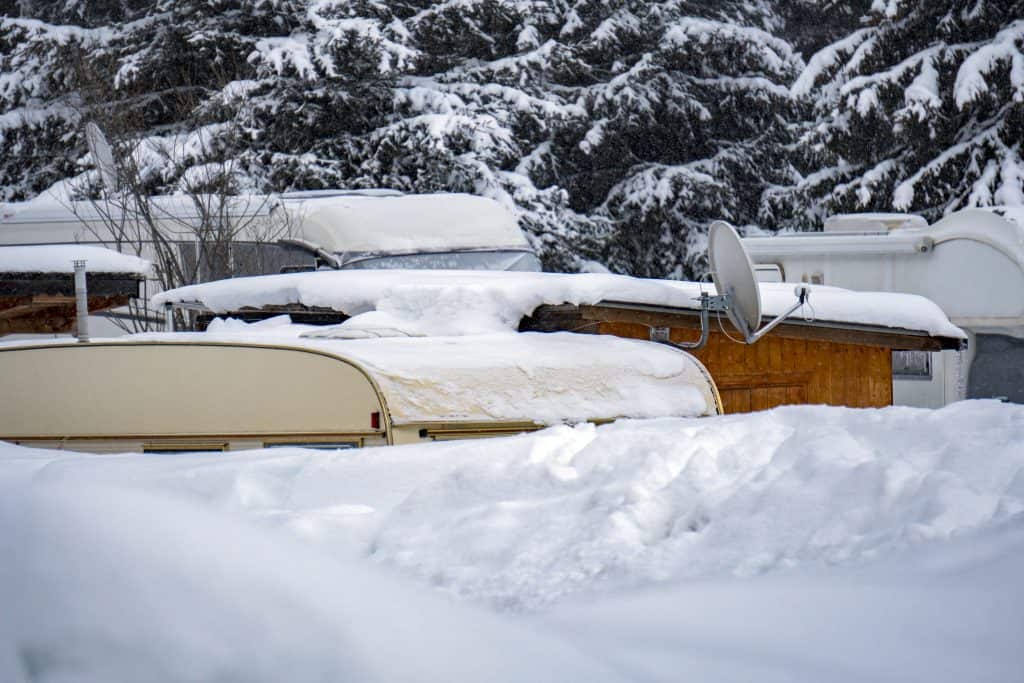
If you’re heading up for a long ski trip or setting up your winter home in an RV, an essential step of your hibernation process is properly skirting your fifth wheel!
Skirts can be made out of lots of different materials and can be made from scratch or custom built by professionals. There are several elements that go into making an effective fifth wheel skirt, but there are some methods that are tried and true.
Functional fifth wheel skirts can be made from a variety of materials. If area temperatures are below freezing, insulated skirting is advised. This can be bought, or created with foam board and waterproof fabric. Plywood, vinyl, styrofoam boards, and even mounds of snow can also be used to create an effective seal against the elements.
RV skirting is an important thing to use when you’re camping in cold weather. It will prevent your utilities from freezing, maintain heat inside the living space, and keep everything protected from the elements. Below we’ll look at all the different materials and methods that go into making a good skirt!
Common RV Skirting Materials
RV skirts can be made of almost anything you can think of! Cold fifth wheel owners have tried everything from store-bought insulated fabric to broken down cardboard boxes. While there are lots of things that can be used, some materials definitely work better than others.
At the end of the day, an RV skirt’s main job is to protect the underside of the vehicle from the elements. It also should keep as much heat in as possible. And, of course, it shouldn’t blow away or fall apart either.
So let’s get into the pros and cons of some common skirt types!
Store Bought Skirts:
There are a variety of skirts that are available online and in several outdoor supply shops. There are two main types of RV skirts you can purchase in stores: insulated and non-insulated. Insulated skirts are the best option if you’re going to be spending a lot of time in below-freezing temperatures. They’re bulkier and more expensive than their counterparts, but they will also do a better job of keeping the heat of your RV in.
Non-insulated skirts mainly provide a layer of protection from wind, rain, and dust. They aren’t as good at keeping the cold out, though they are cheaper. Many people who buy non-insulated skirts like to compensate for this weakness by adding layers of styrofoam or fabric to it.
AirSkirts
An inflatable solution from AirSkirts™️ uses the air in their inflatable pods for great insulation, but then readily deflates at the end of the season for easy storage. Air can be a great insulator, and even those campers in hot climates benefit from AirSkirts™️ to trap the cooler air underneath their RV.
Plastic Tarp:
This is a cheaper alternative to officially produced RV skirts. But even with a reduced cost, it still gets the job done. Tarps are widely available as camping gear, and many of them are waterproof. They are cheap and easy to find.
Much like non-insulated skirts though, a generic plastic tarp won’t do a super great job of keeping the heat in. If you choose to go with this method, you’ll want to bulk it out with some additional layers.
Tarps also aren’t specifically made to cover RV bases, so you may need to buy one that is extra large to suit your needs. If you can’t find one big enough, you can also buy multiple tarps and attach them to the different sides of your fifth wheel. These 10×10 tarps are sturdy, reliable, and quite cheap.
While this initially might require a bit more work, it will be easier to take it down because you already have separated sections. Tarps are a good option for skirting because they are cheap, durable, and versatile.
Snow or Dirt:
If you’re living dirt cheap and don’t want to buy a produced skirt or tarp, you can even use natural materials to protect the base of your fifth wheel.
For those who are staying in particularly snowy areas, you can easily mound snow around the sides of your vehicle. Even though it’s cold for us to touch, snow can actually provide a nice seal against wind, ice, and colder temperatures.
Particularly if you expect heavy snowfall throughout the winter, this can be a good option for you. It won’t melt away and will provide stronger and stronger protection with the more layers it builds. As an added bonus, you’ll have lots of material to patch up any holes and weaknesses too!
You can also use dirt in the same way if you’re planning on staying in the same place for a while. This is the far messier alternative though, and I’d only recommend it as a last resort. You’ll probably only want to use dirt as extra insulation if you already have some kind of protective layer around the edges of your vehicle.
Soil is good at retaining heat, but it can also become difficult to clean up and drive away from. Snow is the better natural option if you can manage it!
The options listed above only make up a fraction of possible skirting materials. Many people also use plywood, plastic panels, styrofoam, vinyl, and anything else they can think of!
Ways to Attach the Skirt to the Fifth Wheel
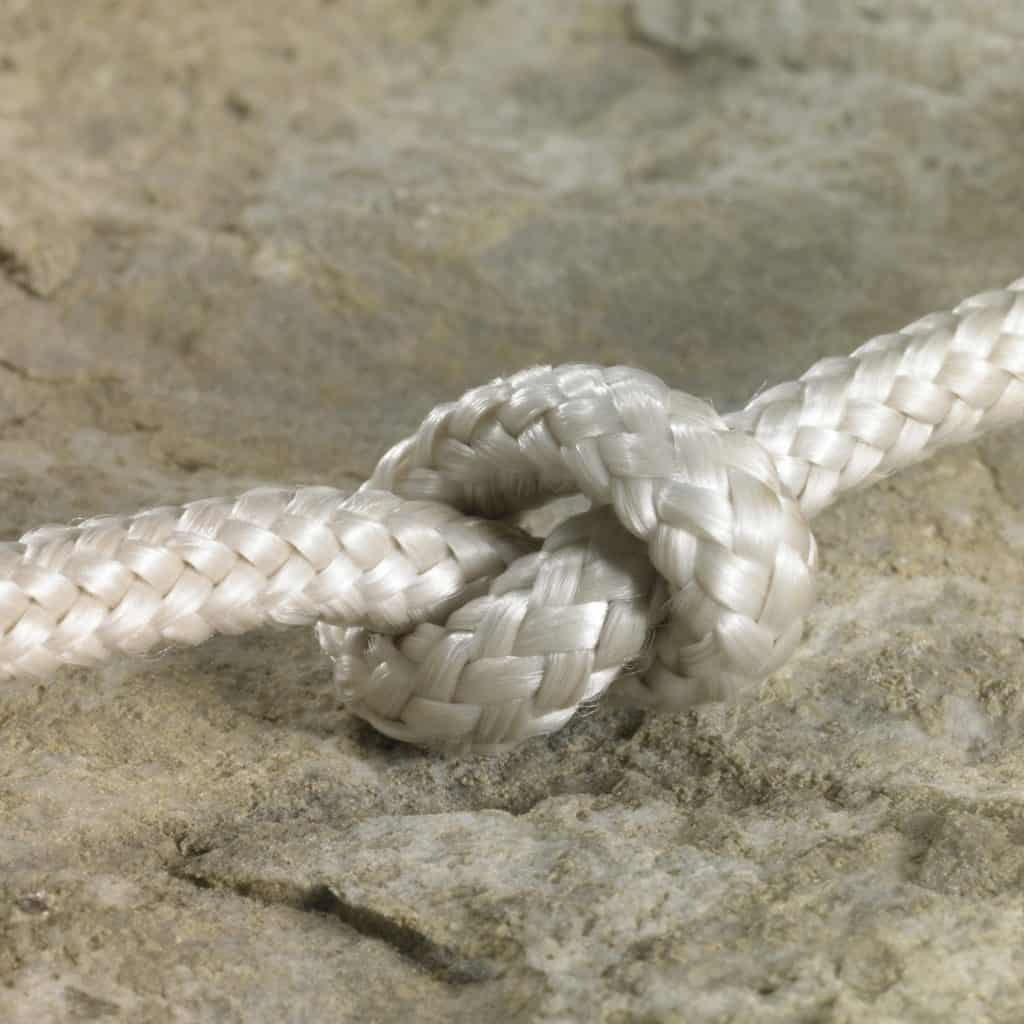
Once you’ve chosen the material of your skirt, your next step is to firmly anchor it to your fifth wheel. There’s a good amount of freedom in this choice too!
Let’s take a look at some of the best attachment methods now.
Buttons and Clasps:
This is a classic method of attaching RV skirts. Buttons hold up well to the elements and can’t be easily blown away or detached. Most store-bought skirts will come with buttons.
If you’ve made your own skirt though, you’ll probably want to use a different method. Buttons are difficult to attach to other materials without weakening their grip.
Knots and Rope Ties:
If you’ve chosen to go with a tarp skirt, a rope is probably the best way for you to secure it to your vehicle. Most tarps have holes along the edges that make it easier to tie them off.
If you’re a confident knot-tier then this could be a good option for you! Rope and strong cords are cheap and readily available.
The risk of this method is that ropes can fray and weaken over time. If you use low quality rope or don’t tie it off properly, your skirt might come loose. Use ropes only if you’re confident in your own knot work!
Suction Cups:
This is a more unconventional method to attach skirts. Suction cups can be useful if you’re using solid panels of metal or plastic as your skirting material. They are meant to attach firmly to solid surfaces.
The risk of using these is that their grips will weaken over time. They might work well at first but they usually become less reliable later on. They are also less readily available since they are not used as commonly as rope or buttons.
Ways to Attach the Skirt to the Ground
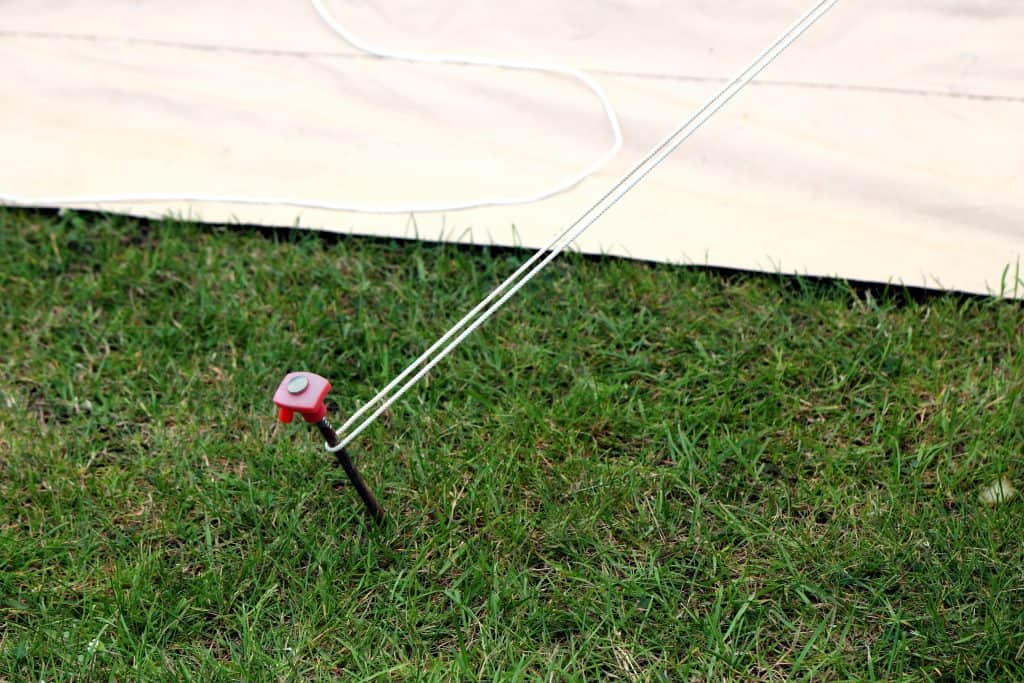
Now that you’ve successfully attached your perfect skirt material to your fifth wheel, the final step is to secure it to the ground. You want to make sure that no wind, snow, or dust can blow beneath the seal.
Stakes:
This method requires that your chosen skirt has loops along the base. These might be available if you purchased a skirt from the store, but you can also sew these on.
Drive stakes through each of the loops around the base to secure the skirt to the ground. This method works well because it is effective on uneven ground and creates a seal along all edges.
Weighted Bases:
Another option for base security is to place weights along the edges of your skirt. These weights can either be placed inside or outside the skirt and will work to keep everything on the ground.
Weighted bases work best in areas that have lots of wind. You can use chains, PVC pipes, or even large rocks to secure the edges of your skirt. I personally prefer to use chains because they are heavy and flexible, which lets them contour to uneven surfaces.

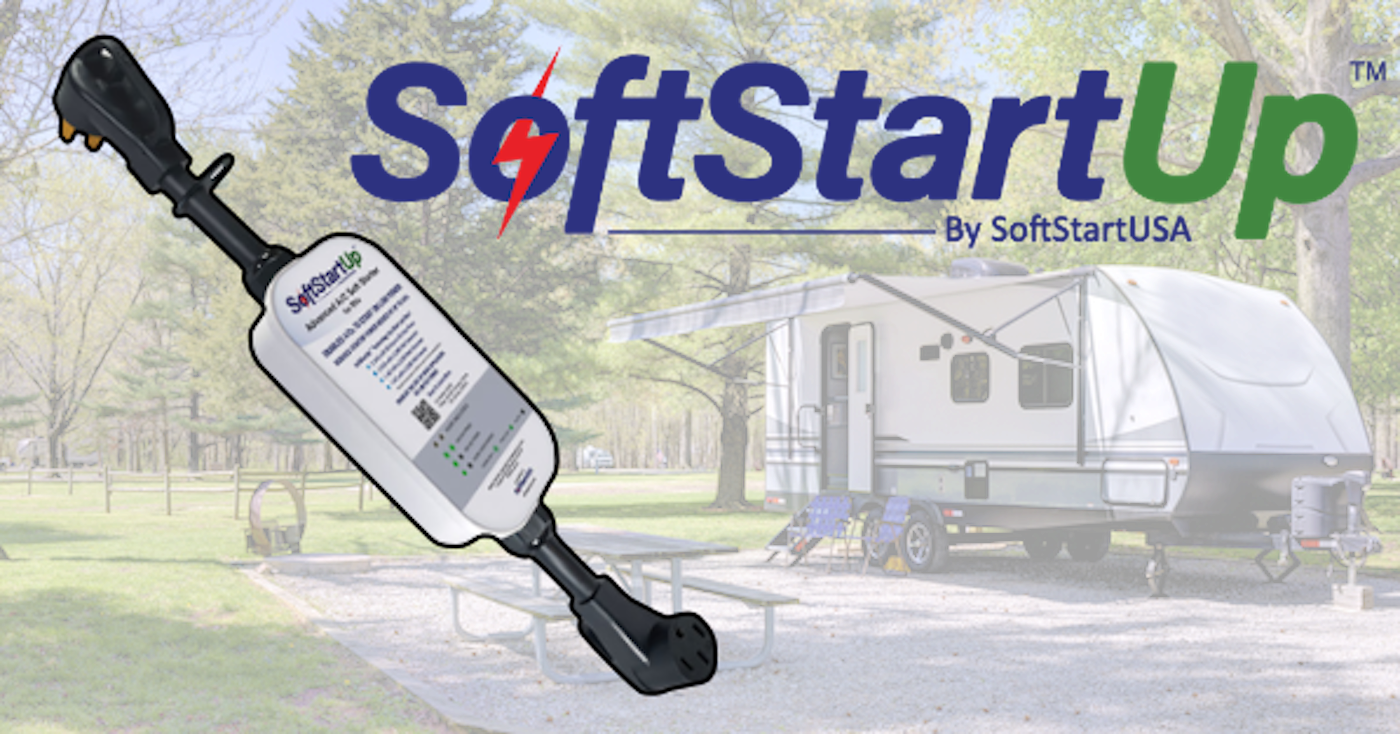
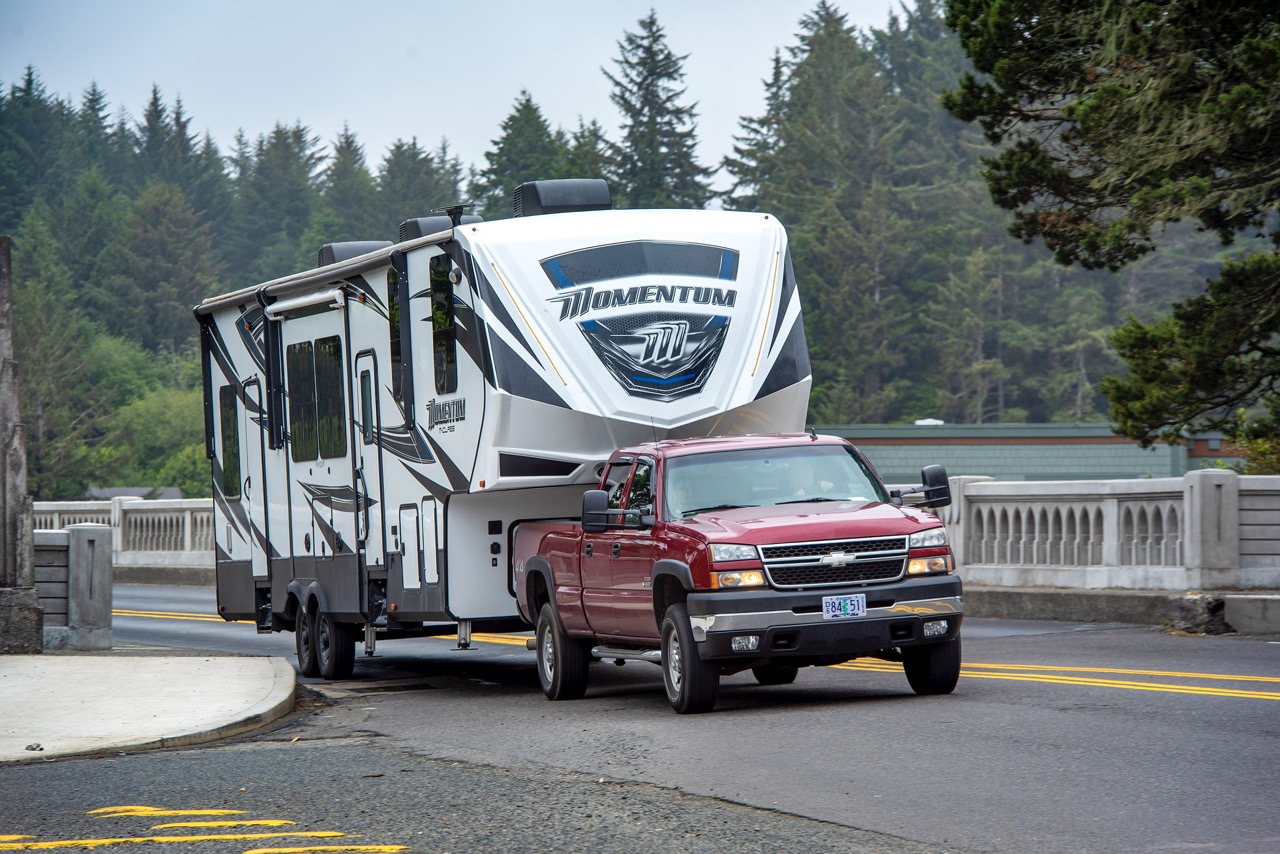

What about using the water weights for pool covers to hold down the skirting?
Suggestions for tarping/skirting the nose, hitch area of our 5th wheel?
I am thinking of driving rebar stakes front and back with 2″ poly iso foam and taping the seams and pile the snow against it. I will be staying the winter in the Aspen Valley. Any good ideas about the pop outs? Maybe attach poly iso to the bottom. I have access to the insulation and rebar.